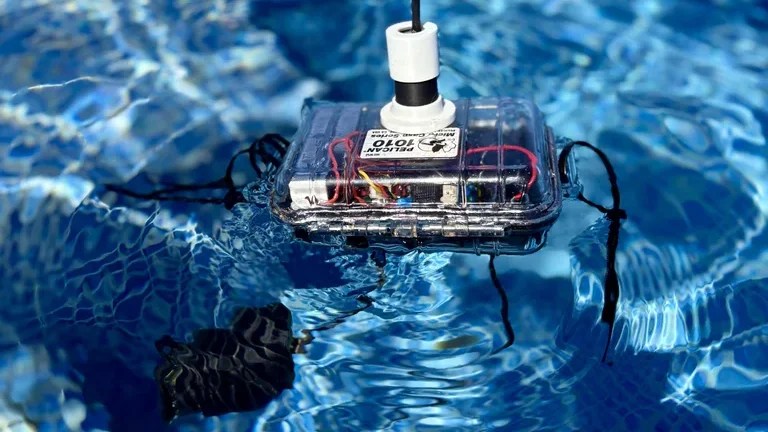Out on Maui, [rabbitcreek] desired to keep track of local ocean conditions. The easiest way to do that was by having something out there in the water to measure them. Thus, they created a floating ocean sensor that could report back on what’s going on in the water.
The build uses a Xiao ESP32-S3 as the brains of the operation. It’s paired with a Wio-SX1262 radio kit, which sends LoRa signals over longer distances than is practical with the ESP32’s onboard WiFi and Bluetooth connections. The microcontroller is hooked up with a one-wire temperature sensor, a DF Robot turbidity sensor, and an MPU6050 gyroscope and accelerometer, which allow it to measure the water’s condition and the motion of the waves. The whole sensor package is wrapped up inside a 3D printed housing, with the rest of the electronics in a waterproof Pelican case.
It’s a neat project that combines a bunch of off-the-shelf components to do something useful. [rabbitcreek] notes that the data would be even more useful with a grid of such sensors all contributing to a larger dataset for further analysis. We’ve seen similar citizen science projects executed nicely before, too. If you’ve been doing your own ocean science, don’t hesitate to let us know what you’re up to on the tipsline!
















Very cool. I’ve done this on a professional level but a bit of a different use case. It’s to measure temperature, co2 and some other measurements for government research. In my case, it’s all powered using an ethanol generator. These ones are put near the poles so solar wasn’t a good option. That would be a good option for this one to extend the runtime. Sadly I’m not allowed to say much about it due to NDA.
With gov research obliterated a fast speed, especially environmental research, you might be freed from your NDA soon…
Yeah I’m already seeing a push with the ham radio people to highlight the ability to download the satellite weather data which I know has always been possible… Maybe stuff like that is just going to become a “thing”
so… the essence of your comment is that you did something else that also floats but are not allowed to tell us any more.
I recently learned that the majority of the plastic waste in the ocean is caused by discarded fishing gear (nets and such).
Took them a few decades as well as banning plastic straws to find that out then?
I guess the second on the list is discarded research buoys..
P.S. Not that I care too much about the straws itself, it’s just so silly to hype that up and by doing so suggesting it was a major cause.
Youre saying this like its a bad thing.
Hey! Name stealer!
I’d love to see your source for that claim.
https://ourworldindata.org/ocean-plastics says:
https://www.nature.com/articles/s41598-018-22939-w (linked from the ourworldindata site) does say that the Great Pacific Garbage Patch’s mass is 52% abandoned/lost marine equipment, but while the GPGP may receive an outsized share of media coverage, it’s only an exceedingly small portion of the total water area on Earth. The vast majority (70-80%) of plastics in our oceans comes from land, typically winding up in the ocean in runoff.
I’d like to know what the objective of this was.
I’m confused. Initially I wanted to know what the objective of this is, but the explanations confuse me even more.
The introduction in the Instructable says:
when I search for “clean water lens” it seems to be a water layer under ground 1. How is that related to ocean water and their turbidity?
what fresh water ocean are there? Lakes sure, but oceans?
I can think of rainfall overflowing the wells, spilling sewage into the ocean. But where is drinking water directly siphoned off the ocean? And even if they refer to a lake, how is the clear water lens related to the lake then?
How big are the waves? As long as they are putting out a buoy, might as well check water temperature and how clear the water currently is. Making it about safety or sewage might be just for “audience appeal”, or might be why they care how clear the water is.
I think I would just use something like this, together with whatever sensors I wanted to use. It was designed for use on balloons but could be used for just about any kind of remote monitoring.
https://qrp-labs.com/u4b.html